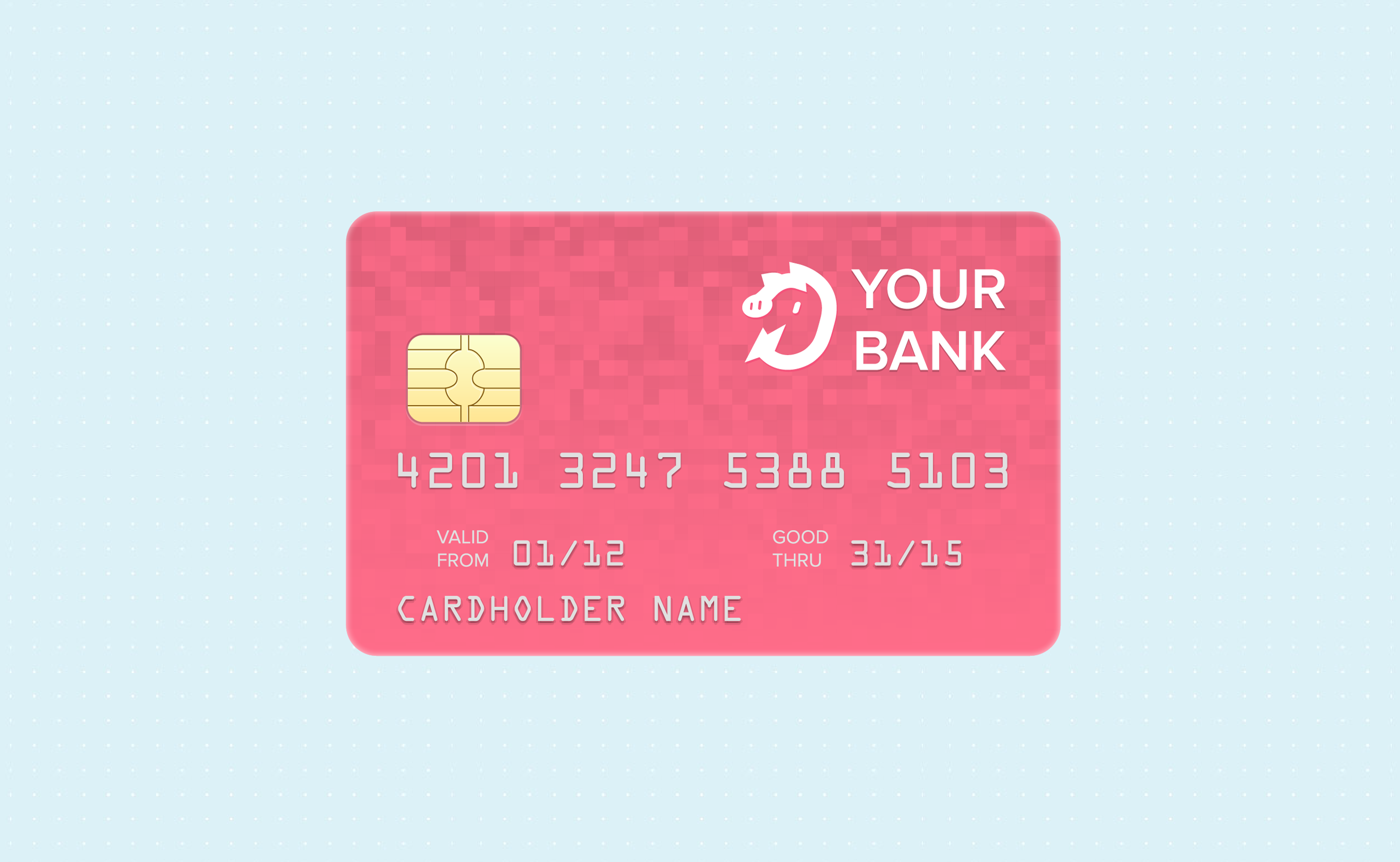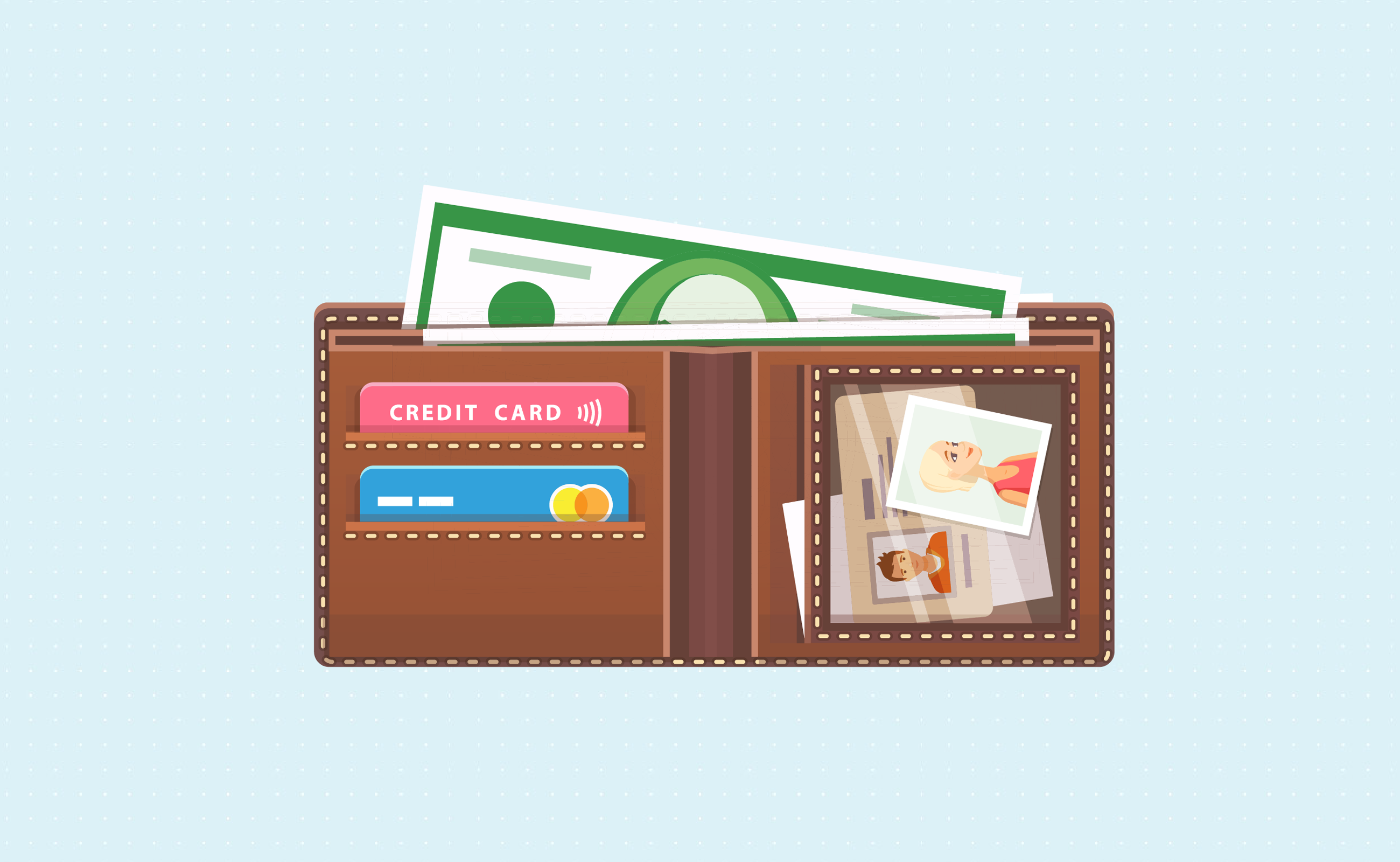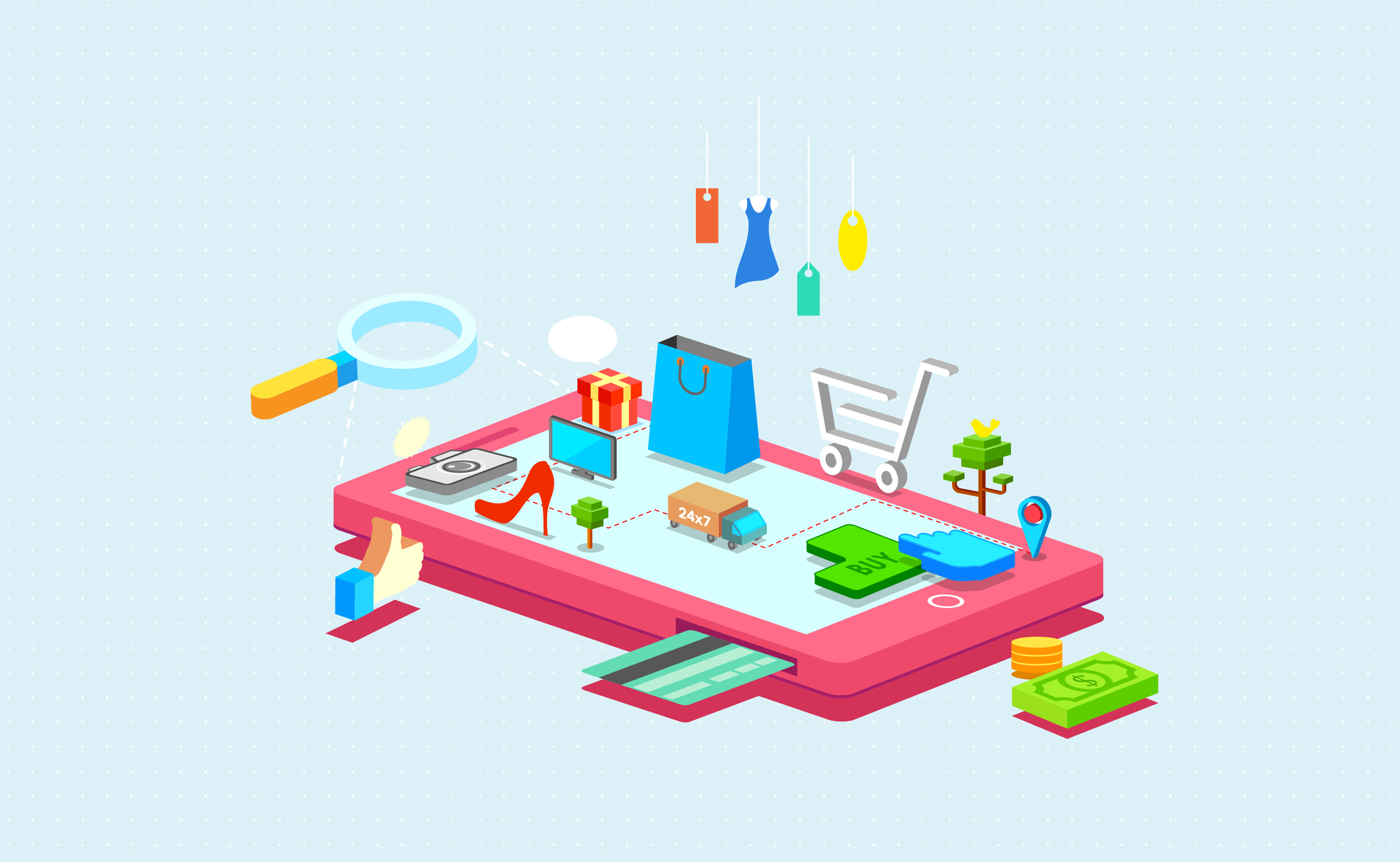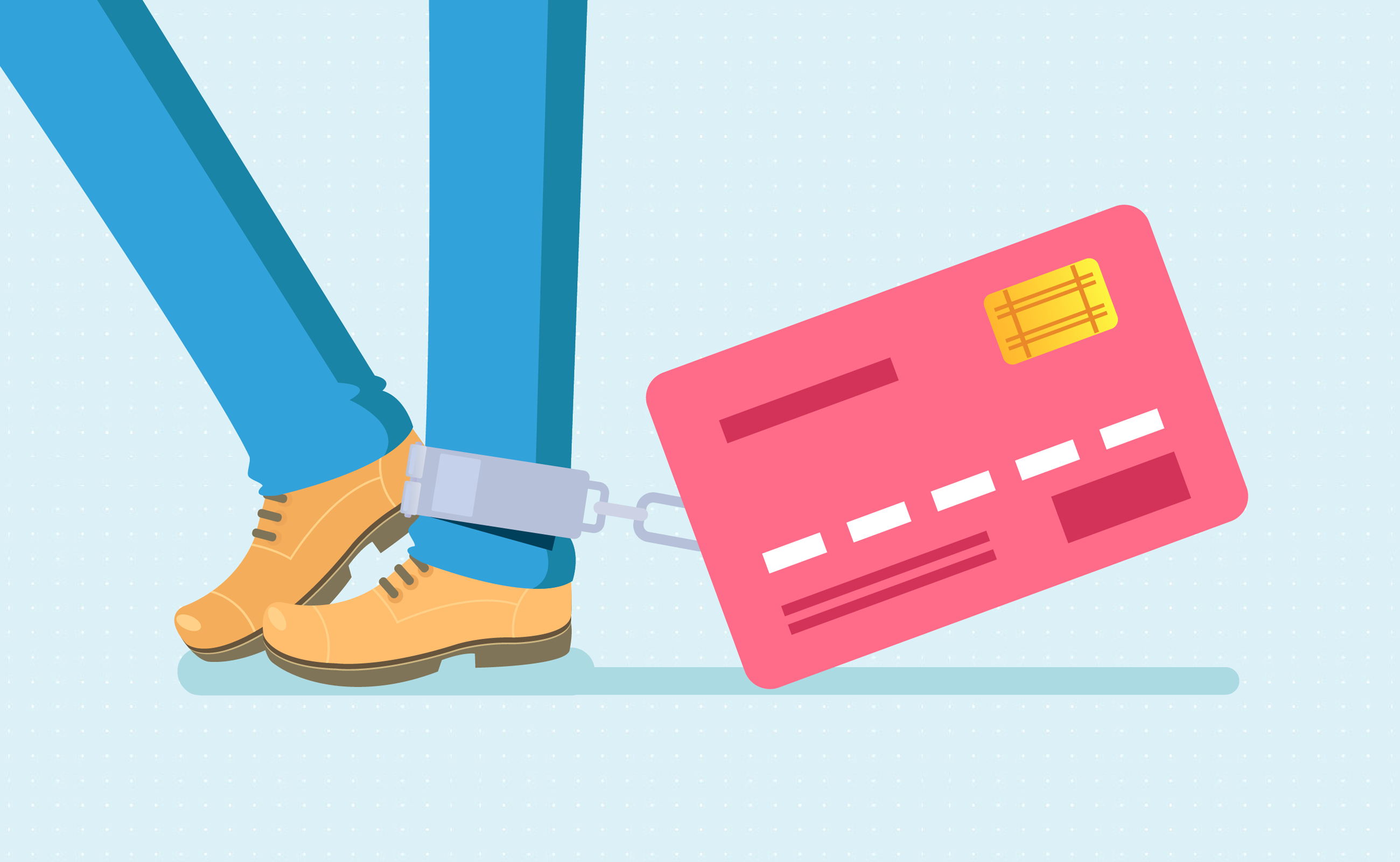 Credit Card Principal vs Interest Calculator
Credit Card Principal vs Interest CalculatorUse this calculator to determine what portion of your payment will be applied toward the principal balance & how much you will spend on interest this month. The calculator also estimates how long it will take to repay the debt along with the total interest expense until the balance is paid off.
Authored by Jose Abuyuan on January 08, 2020

America has a love-hate relationship with credit cards. In the past year alone, Americans owe a total of $870 billion in credit card bills. This represents a five percent increase since 2017. In addition, more than 55 percent of credit card holders in the United States are in debt. Today, the average consumer can have more than $6,300 in credit card balances.
The Great Recession has shaped an entire generation’s attitude toward debts. Mounting credit card debts are often featured in cautionary tales espousing fiscal responsibility. Many millennials today are reluctant to even use credit cards for this reason.
Moreover, the Federal Reserve states that more families use credit cards to cover shortfalls. This can be a dangerous precedent for many card holders. Families may not have enough income left to cover the entire balance once it’s due. With average rates as high as 17.73 percent at the second quarter of 2019, letting credit balances roll over is a risky proposition.
Credit cards are a type of consumer debt. In normal circumstances, credit cards lack the advantages offered by so-called “good debt.” Anything bought with credit cards almost always do not grow in value. Because they are not backed by an asset, they have higher than average interest rates. Credit cards are not tax deductible since they are used for discretionary expenses.
Their high rates make debt burdens especially daunting. You may find that a large part of your budget disappears into credit card bills. In addition, the amount of money you pay toward credit balances can eat into your savings. You could have set that money aside for retirement or emergency purposes.
Even those wary of credit card debts often have one anyway for the convenience they offer. They often take advantage of the card’s grace period to make purchases instead of carrying cash. If they pay their balance on time, they do not need to worry about incurring debts. Credit cards can also help families cover unexpected expenditures when they lack cash. This is acceptable once or twice if they can pay the balance afterward.
However, rising costs and stagnant wages push families to rely on credit cards. This situation can turn into a cycle that can lead to toxic debt burdens. A family’s income might fall short of their expenses once the balance is paid. In turn, they may use credit cards again to cover for the difference. If they fail to pay off the balance, they accumulate interest that they might not be able to pay off.
Despite their terrible reputation, credit cards are not all that bad. If you know how to use them, they can be as helpful as any other line of credit. Credit cards offer a plethora of benefits besides point systems and other rewards offers. Used responsibly, they can even help you save money.
Many credit card users today know the value of playing the float. By paying off their entire balance, cardholders avoid paying interest altogether. They can repeat this as often as they can as long as they can afford it. This system allows you accumulate rewards points or flyer miles much faster. The points can help you save money on plane tickets or purchases from merchant partners.
Playing the float also lets you reap the benefits of going completely cashless. Lining up at an ATM before shopping can become a thing of the past.

Going cashless also means that you won’t need to worry about losing any of your money to criminals of all stripes. Muggers and pickpockets can take your wallet, but they can’t use your card. All it takes to prevent fraud is a single timely phone call. Your money remains safe in the bank and you lose nothing.
You can’t say the same when a robber empties your ATM, uses your debit card, or steals your cash. In these cases, your money is gone. Debit card users might be able to get it back if the fraud is reported immediately. However, the bank needs to process your report before you get your money back, which can take a long time.
Many millennials have been put off by credit cards. Instead, they insist on paying for everything in cash. This is often a necessary concession to financial realities. They already have debt obligations like college loans. Other times, credit card use comes as a lesson learned too well. Seeing others mishandle their finances have made many young people averse to debt.
As prudent as this may sound, it isn’t always the wisest financial move. Without any debt whatsoever, you have no credit score. This in turn can undercut your ability to secure a good rate on future loans. In some cases, landlords might reject you as a prospective tenant if you don’t have a good credit history.

Fortunately, having a credit card can help you build a good score if you use it right. By playing the float, you establish yourself as capable of paying creditors on time. And if you keep at it, this positive impression will only keep growing.
One thing to remember when managing any debt is that it isn’t the monthly payment that matters. The relationship of interest and principal plays a key role in managing your payment. Basically, the higher the monthly payment, the more money you save in the long run.
The first component of your debt, the principal, is the actual amount that you borrowed. It is the most important part of the debt. The longer the principal remains unpaid, the longer the debt lasts.
Paying down the principal is the most important part of clearing credit debt. Each monthly payment only pays a part of the principal. For credit card debts, this part is very small.
Interest is the cost of borrowing the principal. The higher the rate and the longer the terms of the debt, the greater the amount of interest accrues. Leave a debt long enough and the amount of interest you pay may exceed the amount you borrowed.
Part of the problem with credit card debt is minimum payments. Most people prefer smaller monthly payments that fit into their budget with ease. With debt, however, smaller payments are often counter-intuitive. Lower incremental payments translate to longer terms and higher interest payments.
To clear your credit card balances, you must pay higher than the minimum. Often, minimal payments go into paying a part of the interest and little else.

Over time, your interest payments compound while the principal remains largely unpaid. This way, it can become impossible to pay off your debts.

Sometimes, the fault involved in credit card debt is your own. For the past few decades, people have seen them as a way of extending their buying power. Disastrous consequences often follow. Although usually seen as the stuff of cartoon hijinks, these debt fiascos are often too real.
This principle in reverse applies to credit cards. People are more ready to give in to impulses when money is invisible. Many people do not see credit card bills as “real money” until they receive it at the end of the month.
Companies are far from blameless for continuing the credit card crunch. Predatory policies market high-interest cards to so-called emerging markets. These groups—low-income families, people with disabilities, and teenagers—are often ill-equipped to play the float or repay on time. Moreover, credit companies and retailers go to great lengths to encourage credit purchases.
Of course, the worst that happens in the cartoons is that the items get repossessed. This is not how it works in real life. Items purchased with a credit card depreciate; thus, they cannot be repossessed.
Instead, you are saddled with mounting debt whose monthly payments may be hard to afford. The penalties you incur for late payments aggravates the problem. These sanctions may leave you with a much higher debt.

Over time, debt obligations can put you in a precarious situation. When you lose your job while in debt, your entire financial situation can go south.

Credit cards are either an indispensable tool or a necessary evil. Sometimes, it might be better to avoid using a credit card altogether. When you don’t have that option, you must take responsible credit card use seriously.
Among the biggest obstacles to effective credit card use is your own self-control. Even conscientious spenders may find it hard to keep track of their spending if it’s done in plastic. Treat credit cards like you would cash on hand and incorporate these into a budget. Spend only what you can afford to pay before the due date.
Avoid marketing traps. Retailers have long encouraged irresponsible consumerism among the American public. Impressing your neighbors became all the reason to buy something you didn’t need. This bad financial habit can scuttle your financial standing. Leave the Joneses with what they can afford (or not). Try to resist buying items because they’re marketed as the next cool thing. Chances are, you don’t really need them.
Not all cards are created equal. Some disreputable credit companies offer cards with usurious rates or absurd monthly fees. Be wary of any card that offers fast approval. Read the terms of your card with care and watch out for any caveats in the fine print. Even reputable cards may have terms that are hard to keep up with.

Sometimes, going over the budget is inevitable. As a safeguard, you can also choose cards with lower annual interest rates. This way, you can keep your interest payments manageable if your balance carries over.
You may also get a secured credit card. This card requires some money up front that acts as a collateral for your credit limit. You wouldn’t need to worry too much about going over the limit, since it is usually tied to the amount you deposit on it. A secured card from a reputable provider is as good as a regular credit card in building your credit score.
Paying off credit card debt requires extra discipline and a little belt tightening. The first thing you should do is increase the amount of money you dedicate toward debt payments.
Divert all non-essential money to paying off debts. This may sting a little at first, but do not be alarmed. In the long run, however, it can save you several thousand dollars in payments.
Contact your creditor to make sure that your extra payments go toward your principal. Shrinking the size of the principal not only shortens the lifespan of your debts. It also reduces the amount of interest you pay in the long run.
Keep your rates low. Pay on time to avoid penalties that can double your rates. You can also opt to pay multiple times rather than all at once. This lowers your average monthly balance and brings down your monthly interest rate.
If you can, try to explore options for consolidating or refinancing your credit debts. It might be cheaper to manage one debt with a smaller rate. This option works especially well for people with too many high-interest credit balances.
Targeting your credit card bills is the first step toward debt-free living. A sound payment strategy can help you stay on track with your debt reduction goals.
Not every strategy works everyone, however. So choose the one that works for your needs and habits. To learn about the two most effective debt paydown strategies, visit this page.
Jose Abuyuan is a web content writer, fictionist, and digital artist hailing from Las Piñas City. He is a graduate of Communication and Media Studies at San Beda College Alabang, who took his internship in the weekly news magazine the Philippines Graphic. He has authored works professionally for over a decade.